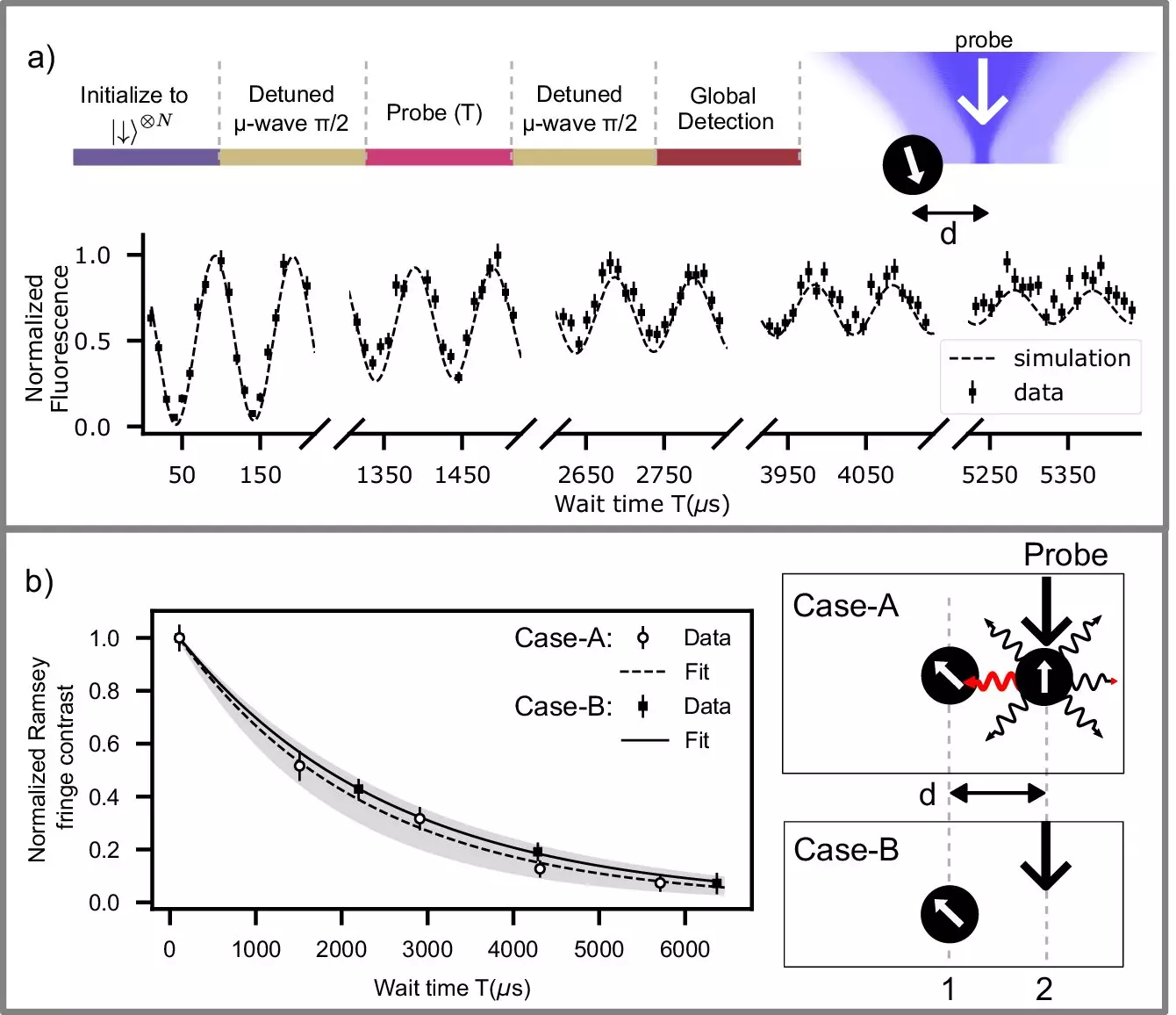

Quantum computing stands on the precipice of a technological revolution, yet it remains an intricate field teeming with challenges. At the heart of quantum computing are qubits, the fundamental units that encode and manipulate information. However, these qubits are notoriously fragile, making them susceptible to various disturbances during operations and experiments. This fragility necessitates advanced techniques to protect their integrity, particularly in processes such as quantum error correction, where maintaining coherence is crucial. A recent breakthrough by researchers at the University of Waterloo tackled these fragile aspects of qubit manipulation, potentially propelling quantum computing into a new era.
Qubits can be adversely affected during measurement operations, leading to what is known as “state-destroying” measurements. When qubits are reset or when their states are checked, adjacent qubits may inadvertently lose their coherence. This issue compounds in scenarios involving multiple qubits situated closely together, where the risk of cross-talk—the unintended interference resulting from nearby operations—amplifies the susceptibility of quantum systems to errors.
This critical challenge has engendered the development of various protective methodologies, but existing solutions often drain coherence time, necessitate additional qubits, or introduce their own errors. The crux of the problem resides in achieving precise control over qubit measurement without compromising neighboring qubits, a feat that has historically been deemed infeasible. However, the innovative work by the University of Waterloo’s research team has begun to change this narrative.
Led by Professor Rajibul Islam and his research team, this project achieved a monumental step forward by successfully measuring and resetting a specific trapped ion qubit while preserving the states of its neighboring counterparts. Not only was this accomplished within a few micrometers—significantly thinner than a human hair—it was executed with a level of precision that challenges existing boundaries in quantum research.
The team’s methodology hinges on the application of laser technology combined with holographic techniques, enhancing the ability to manipulate qubits without disturbing others nearby. The researchers designed this approach against a backdrop of previous advancements, including programmable holographic technology that proved vital in isolating and managing individual qubit states.
Central to this advancement is the meticulous control of laser light, which is crucial for qubit manipulation. During measurements, a target qubit will scatter photons; the challenge lies in ensuring that these scattered photons do not interact with adjacent qubits. The Waterloo team managed to surmount this issue, achieving over 99.9% fidelity in preserving the state of a qubit while resetting another neighboring qubit.
These figures are not merely numerical; they signify a qualitative leap for quantum computing techniques. The precision achieved means experimental setups can now maintain the delicate balance required for quantum processes, dramatically enhancing the feasibility of conducting efficient quantum operations without the fear of inadvertently introducing errors.
This breakthrough extends far beyond academic curiosity. The ramifications for quantum computing architecture, processors, and quantum simulations are monumental. By enhancing the ability to protect qubits during manipulative operations, researchers can expedite the development of more sophisticated quantum technologies and improve existing systems. Concepts like quantum error correction, vital for maintaining quantum integrity over time, become far more implementable within practical frameworks.
Moreover, this work not only challenges prevailing assumptions about the fragility of qubit states but also encourages a reevaluation of strategies in the field. Professor Islam highlights that controlling the intensity and regulation of laser light could potentially augment existing strategies, even integrating them with techniques that involve spatial considerations of qubit placements. Research is not stagnant; it evolves continuously, embracing new ideas that push the boundaries further.
As the field of quantum computing navigates its complexities, breakthroughs such as the one at the University of Waterloo represent vital steps towards overcoming the inherent challenges posed by qubit fragility. The integration of precise holographic manipulation and laser technology presents a compelling case for the future of quantum information processing.
This work is not only a testament to innovative experimental designs and collaborations but also an invitation to rethink how we approach quantum interference and entanglement. As researchers continue to dissect and understand these challenges, the ultimate evolution of quantum computing could very well alter the landscape of technology, transforming our understanding of computation itself. The journey continues, but with each breakthrough, we edge closer to practical applications that were once the stuff of science fiction.
A groundbreaking expedition led by an international research team, featuring esteemed scientists from the University…
The pursuit of coherent control over wave transport and localization stands as a monumental challenge…
In recent astronomical explorations, researchers have unearthed a striking phenomenon emanating from a distant corner…
The quest for sustainable practices within the chemical industry is more critical than ever. Researchers…
In the complex interplay of human health, the relationship between the gut and the brain…
The relentless drive for sustainable energy solutions has fueled remarkable advancements in solar technology, with…
This website uses cookies.